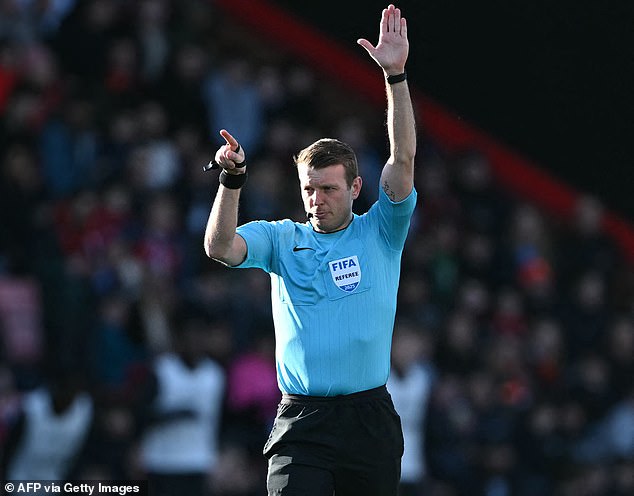Unprecedented Delay Shakes Bournemouth vs Wolves Match
Fans were left in disbelief and outrage during Bournemouth’s clash with Wolves in the FA Cup after a goal-scoring incident led to an almost eight-minute VAR delay. The match, which was expected to be a thrilling affair, took an unexpected turn when a combination of Dean Huijsen and Milos Kerkez seemingly doubled the Cherries’ lead in the 34th minute. Huijsen’s deflection off Kerkez’s header from a deep corner initially triggered a VAR review to check for a potential handball, a process that lasted about a minute. However, the real controversy and frustration began when the VAR system moved on to check for an offside, only to find that the semi-automated offside technology (SAOT) was malfunctioning.
The Flawed Debut of SAOT
The semi-automated offside technology was set to make its debut in English football, and it was touted as a groundbreaking innovation that would revolutionize offside calls. According to the FA’s website, SAOT decisions should take approximately 30 seconds, a significant improvement over the traditional methods. However, in a disastrous moment for the FA, the new technology failed to work as intended. This meant the VAR had to revert to the ‘old-fashioned’ line-drawing method to determine whether Huijsen was offside, leading to an extended delay. The malfunction was a shameful start for the new technology, which was supposed to enhance the accuracy and speed of offside reviews.
Chants of Frustration Erupt in the Stadium
The prolonged delay did not sit well with the fans at the Vitality Stadium. Chants of "it’s not football anymore" and "this is embarrassing" echoed through the stands, as supporters from both Bournemouth and Wolves expressed their frustration. The goal, which initially seemed to be a pivotal moment in the match, turned into a source of irritation and dissatisfaction. The atmosphere, which was electric and filled with anticipation just moments before, quickly soured as the delay dragged on. The incident highlights the growing tension between fans and the implementation of new technologies in football, with many feeling that the technology is detracting from the game’s natural flow and excitement.
Social Media Reactions Pour In
The incident did not go unnoticed outside the stadium either. Fans took to social media platforms like X (formerly Twitter) to voice their discontent. One user wrote, "Every new bit of technology we add to football makes the game so much worse. That time to work out an offside in the Bournemouth game is pathetic." Another fan commented, "Absolutely disgraceful scenes at Bournemouth. 8 minutes to check a goal and then rule it offside. VAR and these officials need to go." A third user added, "The refs and VAR outdoing themselves again with that goal for Bournemouth. More and more embarrassing each week." The outpouring of frustration on social media reflected the widespread sentiment that the introduction of such technologies is not only disrupting the game but also eroding the fans’ enjoyment of it.
Understanding the SAOT Technology
The semi-automated offside technology is no small feat. It involves up to 30 newly-installed cameras mounted at various locations around Premier League stadiums, capturing footage at 100 frames per second—twice the frame rate of broadcast cameras used by networks like Sky and TNT. These cameras track the exact movement of the ball and up to 10,000 surface ‘mesh’ data points per player, allowing for precise and detailed tracking of player positions. When an offside is flagged, the software automatically notifies the Video Assistant Referee (VAR) and the SAOT operator. The system is designed to provide a more accurate and efficient method of calling offsides, but the recent incident raises questions about its reliability and the challenges of integrating such advanced technology into live matches.
The Future of Football and Technology
The failure of the semi-automated offside technology in Bournemouth’s match with Wolves serves as a cautionary tale for the future of football and the use of technology. While the FA and other governing bodies continue to push for innovations that promise to enhance the game’s fairness and accuracy, the reality of technical glitches and delays can significantly impact the fan experience. The incident at the Vitality Stadium is a reminder that the seamless integration of technology into football is an ongoing challenge. As the sport moves forward, it will be crucial to address these issues to ensure that new technologies do not become a hindrance to the beautiful game.











